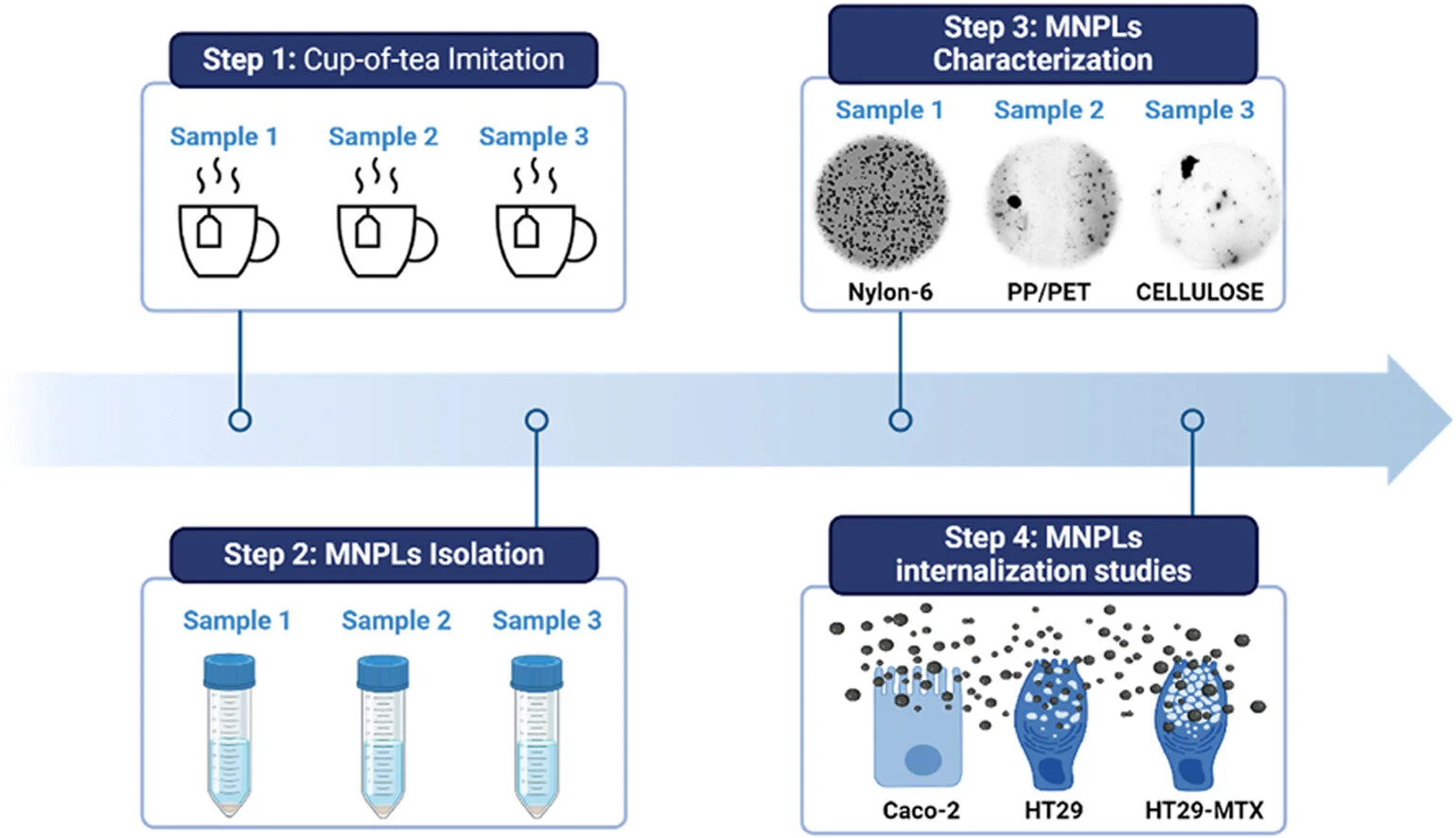Commercial Tea Bags Release Millions of Microplastics Into Your Tea

The Hidden Danger in Your Daily Tea
Plastic waste pollution represents a critical environmental challenge with increasing implications for human health. Food packaging is a major source of micro and nanoplastic (MNPLs) contamination, and inhalation and ingestion is the main route of human exposure.
A new study reveals that commercial tea bags release billions of microplastics when steeped in hot water.
UAB research has characterized in detail how polymer-based commercial tea bags release millions of nanoplastics and microplastics when infused. The study shows for the first time the capacity of these particles to be absorbed by human intestinal cells, and are thus able to reach the bloodstream and spread throughout the body.
Millions of Particles Released
The tea bags used for the research were made from the polymers nylon-6, polypropylene and cellulose. When brewing tea, these materials release enormous amounts of nano-sized particles and nanofilamentous structures.

Breakdown of microplastic release from different tea bag materials
Particle Counts by Material:
- Polypropylene: Approximately 1.2 billion particles per milliliter (average size: 136.7 nanometers)
- Cellulose: About 135 million particles per milliliter (average size: 244 nanometers)
- Nylon-6: 8.18 million particles per milliliter (average size: 138.4 nanometers)
Advanced Analysis Techniques
To characterize the different types of particles present in the infusion, researchers used cutting-edge analytical techniques:
- Scanning electron microscopy (SEM)
- Transmission electron microscopy (TEM)
- Infrared spectroscopy (ATR-FTIR)
- Dynamic light scattering (DLS)
- Laser Doppler velocimetry (LDV)
- Nanoparticle tracking analysis (NTA)
"We have managed to innovatively characterize these pollutants with a set of cutting-edge techniques, which is a very important tool to advance research on their possible impacts on human health."— Alba Garcia, UAB researcher
Human Cell Interaction
The particles were stained and exposed to different types of human intestinal cells to assess their interaction and possible cellular internalization. The biological interaction experiments showed that mucus-producing intestinal cells had the highest uptake of micro and nanoplastics.
Concerning Findings:
- Particles entering the cell nucleus that houses genetic material
- Mucus-producing cells showing highest uptake
- Potential for particles to reach the bloodstream
- Ability to spread throughout the body
Health Implications
The result suggests a key role for intestinal mucus in the uptake of these pollutant particles and underscores the need for further research into the effects that chronic exposure can have on human health.
Researchers emphasize the critical need for standardized test methods and regulatory policies.
"It is critical to develop standardized test methods to assess MNPLs contamination released from plastic food contact materials and to formulate regulatory policies to effectively mitigate and minimize this contamination. As the use of plastic in food packaging continues to increase, it is vital to address MNPLs contamination to ensure food safety and protect public health."
Safer Alternatives
To minimize exposure to microplastics from tea bags, consider these alternatives:
- Loose leaf tea: Use traditional loose leaf tea with a reusable infuser
- Paper tea bags: Choose unbleached, plastic-free paper tea bags
- Metal infusers: Use stainless steel mesh infusers for bagged tea
- Homemade tea bags: Make your own tea bags from unbleached filter paper
The Bigger Picture
This research highlights the broader issue of microplastic contamination in our food supply. As plastic use in food packaging continues to increase, understanding and mitigating these risks becomes crucial for public health.
The study reveals that commercial tea bags are a significant source of microplastic exposure, with billions of particles released per serving. These particles can be absorbed by human intestinal cells and potentially spread throughout the body, raising concerns about long-term health effects. Consumers should consider safer tea brewing alternatives to minimize their exposure to these contaminants.
Enjoyed this article?
Share it with friends or save it for later.